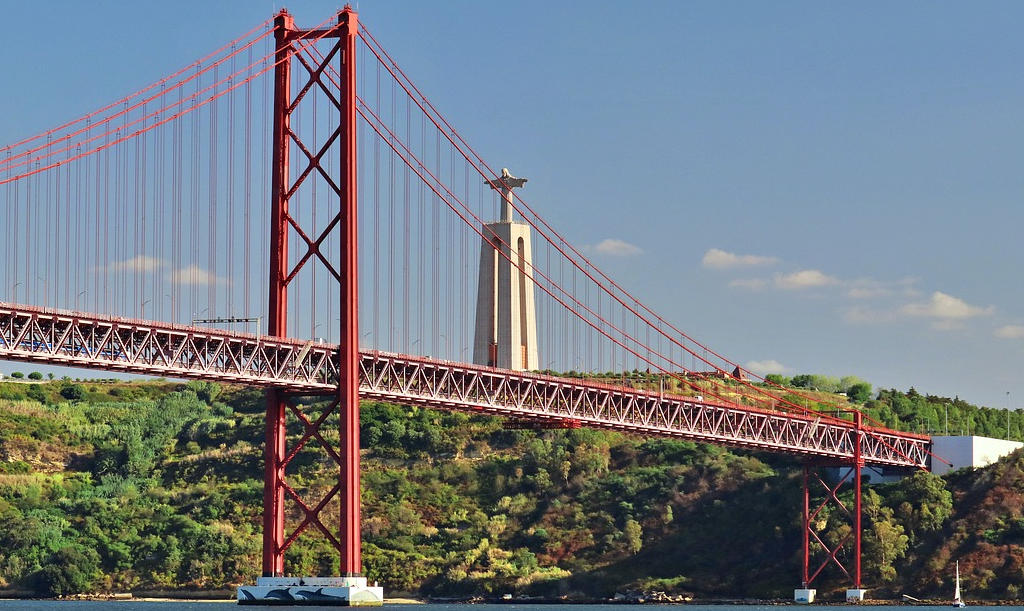The history of the Christ the King monument dates back to 1940 when its construction was approved during a Portuguese Episcopate conference held in Fátima. The idea was born after the Cardinal Patriarch of Lisbon visited the Christ the Redeemer statue in Rio de Janeiro in 1934. The Portuguese sought to express their gratitude for being spared the direct destruction of World War II and to commemorate the 50th anniversary of the act of consecration of the world to the Sacred Heart of Jesus.
The acquisition of the land for the monument took place in 1941, and the cornerstone was laid in 1949 under the supervision of the Portuguese Episcopate. The construction, funded and supported by members of the Apostleship of Prayer, began in the same year and took a decade to complete. The final cost of the complex amounted to twenty million escudos.
The official inauguration of the Christ the King monument commenced on May 17, 1959, and continued throughout the 20th century. In 1984, on the 25th anniversary of the shrine, the Chapel of Our Lady of Peace was inaugurated, adding another significant element to the complex. Subsequently, plans were approved to recondition the grounds of the shrine and build a sanctuary, including a rectory, a chapel, administration and meeting halls, and exhibition galleries. These additions aimed to enhance the visitor experience and provide additional spaces for worship and reflection.
In 1975, when Pope Paul VI established the Roman Catholic Diocese of Setúbal, the Christ the King monument and the Seminary of Almada were still under the control of the Patriarchate of Lisbon. However, in June 1999, the site came under the authority of the Diocese of Setúbal, which undertook restoration projects to preserve and maintain the monument. The municipal authority also played a role in cleaning the area and reorganizing the public spaces surrounding the monument.
Over the years, various improvements and additions have been made to the Christ the King monument and sanctuary. In 2004, new spaces within the sanctuary building were inaugurated, including a dining room and segregated dormitories to support pilgrimage to the site. Restoration efforts continued, and in 2006 the Chapel of Our Lady of Peace was reopened. The following year, the Pope John XXIII hall, containing oil paintings by architect João de Sousa Araújo, was opened. The original statue of the monument by sculptor Francisco Franco was also reinstated in the chapel's main sacristy.
On May 17, 2008, the Chapel of the Confidants of the Heart of Jesus was inaugurated, showcasing valuable reliquaries of Margaret Mary Alacoque, John Eudes, Faustina Kowalska, and Mary of the Divine Heart. Bronze Ten Commandments were also placed on the main face of the monument, adding to its religious significance. The Chapel of the Blessed Sacrament, dedicated to the revelations made by Margaret Mary Alacoque, was opened on January 6, 2009, presenting two related paintings and a prominent tabernacle.
Lisbon.vip Recommends
Visitors to the Christ the King monument can access the observation deck at 82 meters, providing panoramic views of Lisbon, the Tagus River, and the iconic 25 de Abril Bridge. Beneath the statue, the Chapel of Our Lady of Peace welcomes visitors, offering a space for prayer and contemplation. The sanctuary building, located south of the monument, features various facilities, including a library, bar, halls, and the main chapel. The interior spaces provide opportunities for reflection and spiritual connection, with dedicated chapels honoring Our Lady of Peace and the Confidants of Jesus.
The Christ the King monument holds significant cultural and religious importance for the people of Portugal and attracts visitors from around the world. Its commanding presence and awe-inspiring architecture serve as a reminder of the power of faith, gratitude, and hope. As visitors stand in the shadow of the statue, they are invited to contemplate their own beliefs, seek solace, and embrace the beauty and tranquility of the surroundings.
The Sanctuary of Christ the King stands as a beacon of faith and a symbol of the Portuguese people's enduring devotion. Its construction and continuous enhancements throughout the years have transformed it into a remarkable landmark that evokes a sense of reverence and spiritual connection. Whether one approaches the monument for religious reasons or to appreciate its architectural grandeur, the Christ the King monument in Lisbon is a testament to the power of faith and a testament to human resilience and gratitude in the face of adversity.
Map View



